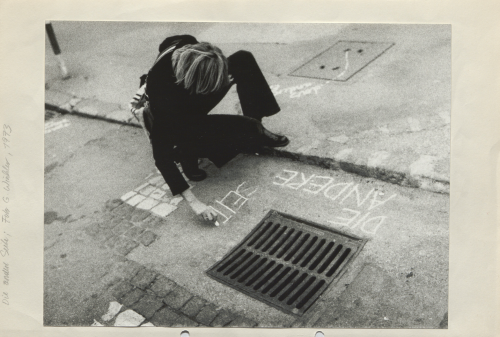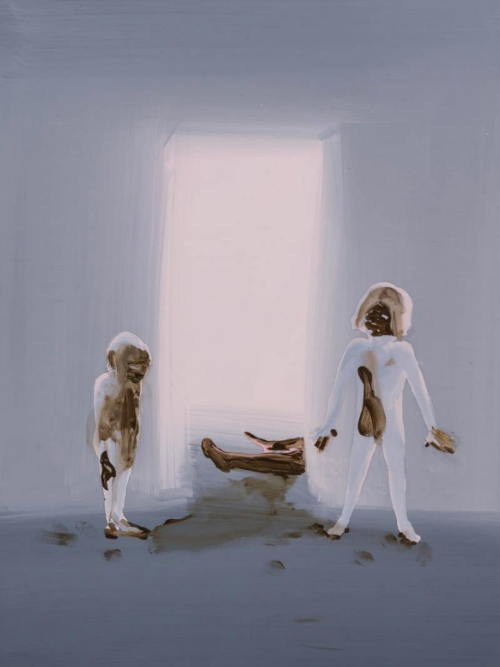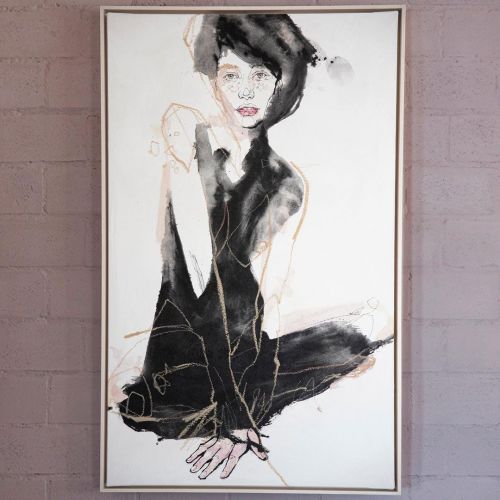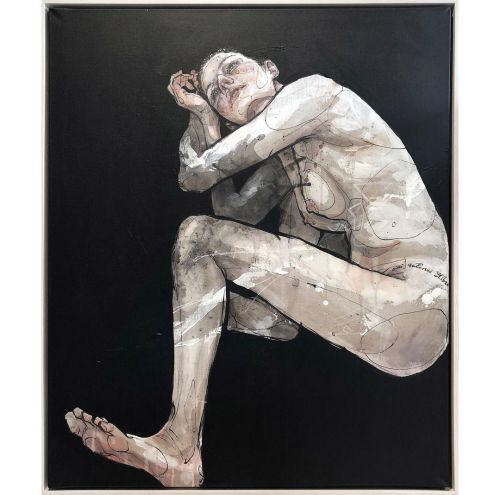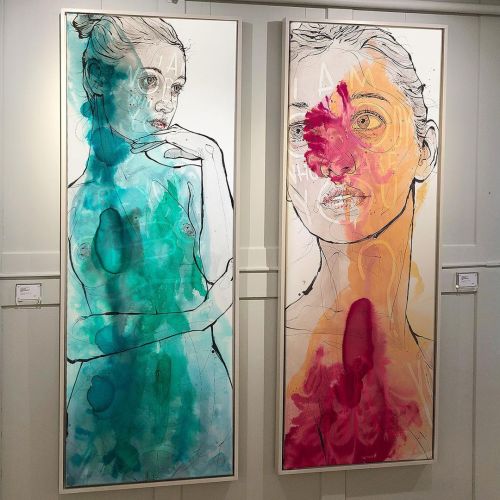#exhibition

Hello
For the people who could not enter the virtual exhibition of Experimenta - Das Science Center this Saturday, here is the Link that allows you to enter my Photos directly.
https://makerfaire-heilbronn.de/event/projects/60f46258903e69a525d964f3
*Photos will only be exposed on the Internet for one week * Greetings.
Concept/Model/Styling/H&M by me.
https://mujergato-world-us.tumblr.com
https://vagabundler.com/stylists/mujer-gato/
Instagram. @mujer.gato
Twitter. @derb_18
Photo.https://www.freiraum-photos.de/
Wearing.@blackoutstuttgart…@blackout-stuttgart… Po Go Stuttgart…

Hello I hope you are well!…
On Saturday July 24th, 2021 I will exhibit a couple of photographs in a virtual exhibition for Maker Faire Heilbronn (Experimenta)… The exhibition will take place from 10:00 until 16:00. I invite you to participate and see my work, I hope you have time… Greetings
Here is the Link to be able to see the exhibition…
➡️https://makerfaire-heilbronn.de/index
*once you are on the Page, click ▶️(Die Maker Faire Online besuchen)◀️ and Write down Your Data, then you will get an E-Mail with the Information to enter the exhibition.*
Concept/Model/Styling/H&M by me.
http://mujergato-world-us.tumblr.com/
https://vagabundler.com/stylists/mujer-gato/
Instagram. @mujer.gato
Twitter. @derb_18
Photo.www.freiraum-photos.de/
Wearing.@blackoutstuttgart..@blackout-stuttgart

The Portuguese introduced tobacco into southern Africa in the 1500s, and it rapidly became an important part of South African life. By the 1800s, tobacco was widely used and many objects were made for storing, snorting and smoking tobacco.
Whether smoked in a pipe or taken as snuff from a spoon, the consumption of tobacco became a social and spiritual act, celebrating the status and generosity of individuals within a larger group. It was also used as a means of transforming and transporting the body into the realm of the ancestors and communicating with them there.
People usually snorted snuff from a spoon, but some also smoked tobacco in a pipe. The earliest tobacco pipes were delicately carved by San|Bushmen from bone or stone. They had no ‘bowl’, but were simply wider at the smoking end, tapering towards a narrow mouthpiece. In some communities, the length of the pipe stem indicated the smoker’s seniority. Even within a single cultural group, artists produced a wide variety of styles using different materials.

This beaded pipe above was made by a Xhosa artist, and has a detachable stem. As smoking was a communal activity, this allowed the bowl to be passed around while the smoker kept his or her own stem.

Finely ground tobacco, or snuff, was stored in small boxes that were created in many forms. Although highly personal, they were often made to be worn in conspicuous ways, such as pushed into the hair or tucked into an armband or a head-ring, hung round the neck or waist, or even inserted into a pierced earlobe. In wearing a snuffbox so conspicuously, the owner communicated information such as his or her social rank, wealth, ethnicity or marital status.

Above is a snuff-spoon comb which was used to snort tobacco snuff, and also comb hair. These type of objects would have been worn in the hair so that a snuff-spoon was always easily accessible.

Tsonga artists often incorporated snuffboxes into double headrests as shown above. Snuff and headrests were seen as bridges to the spirit world, and the owner might rub snuff on the headrest for the ancestors before he or she lay down.
Discover the history of this fascinating nation in our exhibition South Africa: the art of a nation (27 October 2016 – 26 February 2017).
Exhibition sponsored by Betsy and Jack Ryan
Logistics partner IAG Cargo
Image captions from top:
Ox-shaped snuffbox, late 1800s.
Beaded pipe, recorded as Xhosa, 19th century.
Beaded snuff box, recorded as Xhosa, 19th century.
Snuff-spoon comb. Recorded as Zulu, c. 1800–1882.
Headrest snuff boxes, recorded as Tsonga, 1850–1899.
‘Each of us is as intimately attached to the soil of this beautiful country as are the famous jacaranda trees of Pretoria and the mimosa trees of the bushveld… The time for the healing of wounds has come. The moment to bridge the chasms that divide us has come. The time to build is upon us.’ – Nelson Mandela, from his inaugural speech as President of South Africa in 1994.

The man who was once the South African government’s number one enemy, imprisoned for 27 years, was now its first democratically elected president, appearing on the ballot paper alongside 18 other candidates. He was the leader of the African National Congress party, the most influential of the opposition groups in bringing about the end of apartheid in South Africa.
During apartheid, many groups outside South Africa produced political art to raise awareness of apartheid and to promote the fight against it. Through badges, t-shirts and posters the outside world came to know the faces of political prisoners such as Nelson Mandela and Walter Sisulu.

The badges here represent the British-based Anti-Apartheid Movement (AAM), one of the most influential of the campaign groups. It was formed as the Boycott Movement in 1959 by a group of South African exiles and British opponents to apartheid and changed its name the following year. Other badges refer to SWAPO (South West African Peoples Organisation), an armed movement fighting for Namibian independence from South Africa.
See how Mandela’s inspirational story helped shape the history of his nation in our special exhibitionSouth Africa: the art of a nation (27 October 2016 – 26 February 2017).
Nelson Mandela badge. UK, c. 1984.
Nelson Mandela badge. South Africa, 1994.
Anti-apartheid badges, 1984–1987. Mixed media.
Our ability to think and act using symbols – and to make art as a result – is an integral part of being human.
In South Africa the development of artistic activity has left a visible trace of our evolution, establishing it as one of the places where our ancestors first became fully human.
The story begins around 3 million years ago, with objects that were collected and valued for their appearance. This continued in the deliberate shaping of objects to make them aesthetically pleasing, forerunners of true artistic traditions that began 100,000 years ago.
From at least 77,000 years ago, people began to decorate objects and their own bodies and, eventually, to produce two-dimensional paintings and engravings of humans and animals. This archaeological evidence identifies South Africa as one of the cradles of humankind, and is an important part of the country’s national identity.
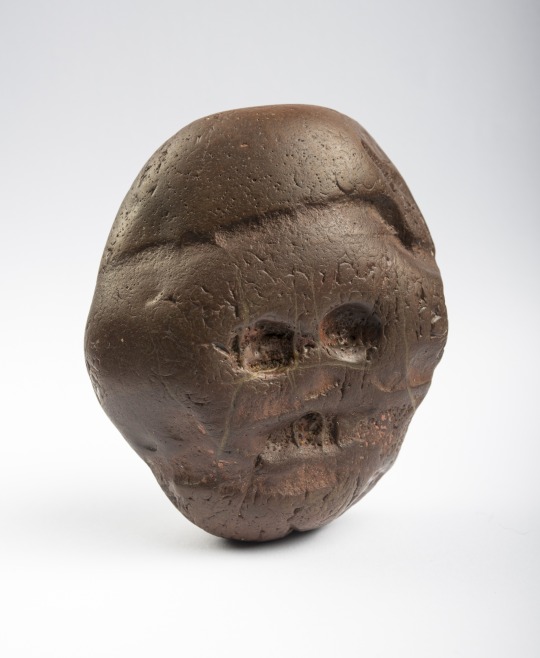
The Makapansgat Pebble is an early piece of evidence for hominid curiosity. It was found in a cave with the remains of early human ancestors, Australopithecus africanus, which are 3 million years old. The stone is not from the cave but was brought there from a site many miles away.
It was not used as a tool but was perhaps valued and kept by its collector because the natural features on both sides look like faces, which were aesthetically pleasing. This could be called ‘found art’, a practice that many contemporary artists employ today.
The deep artistic past is important in contemporary South Africa because it identifies the country as one of the locations where modern human behaviour began. Archaeological evidence, such as the Makapansgat Pebble, also shows it as one of the places where the modern human body developed. This means that we are all descended from Africa, both in terms of our bodily structure and in the way that we act, think and feel.
Some contemporary artists have found inspiration in the celebration of southern Africa as one of the places where modern humans evolved.

This computer-generated image was created for a 1985 poster celebrating the 60th anniversary of the discovery of the skull of a child that’s 2.5 million years old, known as the Taung Child. This child was the same species of early human ancestor as the individual who collected the Makapansgat Pebble.
The discovery of the Taung Child provided evidence that humanity’s earliest ancestors evolved first in Africa and not in Europe as previously believed. Nel has a long-held interest in the interface between art and science and his image drew upon the most advanced computer technology of the time. It subtly links the skills of the palaeontologist, the artist and the computer software designer.
See cutting-edge contemporary works alongside some of the earliest examples of human creativity in our special exhibition SouthAfrica: the art of a nation (27 October 2016 – 26 February 2017).
The Makapansgat Pebble. Collected about 3 million years ago. On loan from Evolutionary Studies Institute, University of the Witwatersrand, Johannesburg.
Exhibition sponsored by Betsy and Jack Ryan
Logistics partner IAG Cargo
Karel Nel (b. 1955), Taung, Early computer-generated image, 1985. Artist’s collection. © Karel Nel.
‘Everything that I do starts with an effort in recalling who I am. Crawling through the clutter of who I am supposed to be; who somebody else thinks I am. External constructions of race and gender and height. The more clutter gets added to the pile from outside, the harder it is for me to get to the core of myself.’ – Kara Walker, 2014
Kara Walker was born in 1969 in Stockton, California and grew up in the South where her father worked at Georgia State University. She is best known for her works which explore issues of race and gender, the American Civil War and slavery.

Like much of Kara Walker’s work, this print titled ‘Restraint’ explores the experience of black slaves in the southern states of America before the Civil War. The female figure wears an iron bridle of a type that was used to punish and humiliate slaves, preventing them from speaking, swallowing, lying down or escaping. The silhouette style is characteristic of Walker’s work. It recalls a style of ‘polite’ profile portraiture that was popular in popular in Europe and America during the era of slavery.

For many European settlers, the voyage to the ‘New World’ promised opportunity and freedom. For enslaved Africans, the journey meant the opposite. In this print a slave ship is carried to shore by other-worldly hands. A plantation owner and a slave on land offer a glimpse of the life to come. Beneath the waves, the silhouette of a black woman brings to mind the many people who perished on the dangerous voyage. The beauty of the aquatint is at odds with the shocking subject.

Slavery was a key issue in the American Civil War (1861–1865). The Confederacy of southern states fought to preserve the institution and the Union of free states fought to end it. The contemporary illustration reproduced in this print depicts the aftermath of the 1864 Battle of Jonesborough, Georgia, which facilitated the Union’s ultimate victory. It is superimposed with the head of a black slave whose freedom depended on the outcome of the conflict.
Trace changing ideas of American identity over the past six decades in our major exhibition The American Dream: pop to the present(9 March – 18 June 2017).
Exhibition sponsored by Morgan Stanley. Supported by the Terra Foundation for American Art.
Restraint. Etching with sugar aquatint, 2009. © Kara Walker.
no world from An Unpeopled Land in Uncharted Waters. Aquatint with spit-bite and drypoint, 2010. © Kara Walker.
Confederate Prisoners Being Conducted from Jonesborough to Atlanta from Harper’s Pictorial History of the Civil War (Annotated).
Offset lithograph with screenprint, 2005. © Kara Walker.
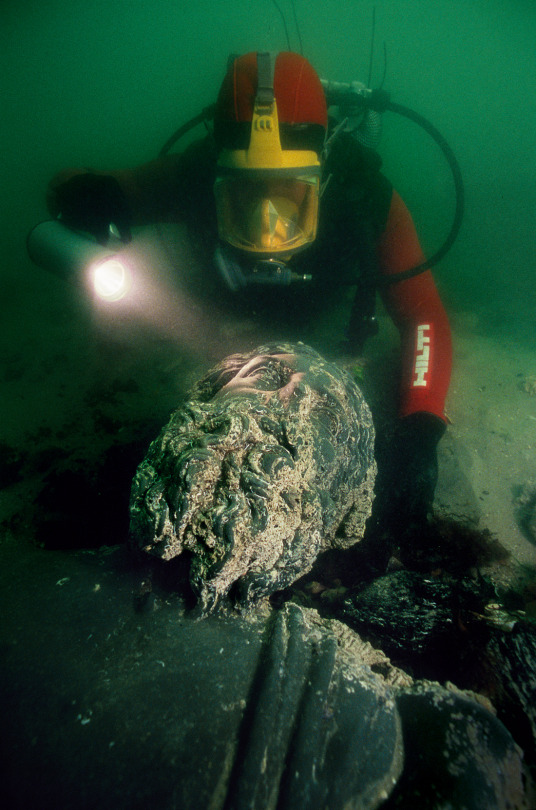
This 2,000-year-old bust depicts Neilos, the Nile river god. Neilos appealed to Egyptians and Greeks alike – he was the Greek version of Hapy, the Egyptian personification of the annual Nile flood that brought prosperity and fertility to the country. Neilos played a significant role in one of the most popular festivals in Egypt, when the beginning of the annual flood marked the Egyptian New Year.

This bust was once mounted into a large decorative shield and adorned a temple in the ancient Egyptian city of Canopus. It was discovered by underwater archaeologists at the base of the wall on which it once hung.
See more incredible objects that have been preserved and buried under the sea for over a thousand years in the BP exhibition Sunken cities: Egypt’s lost worlds (19 May – 27 November 2016).
Bust of Neilos. Canopus, AD 100–200. Maritime Museum, Alexandria. Photo: Christoph Gerigk. © Franck Goddio/Hilti Foundation.
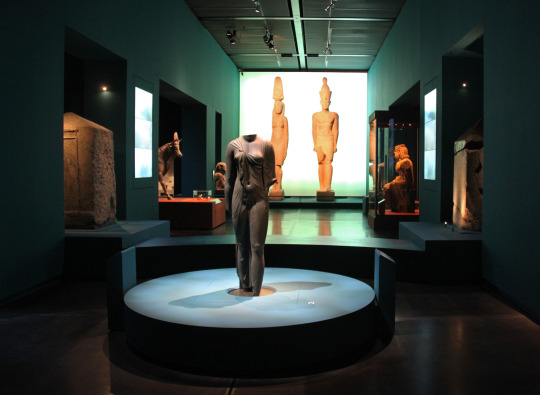
The BP exhibition Sunken cities: Egypt’s lost worldsfeatures incredible sculptures excavated from beneath the waves. Here, Exhibition Curator Aurélia Masson-Berghoff tells us about one of these magnificent works – her favourite object in the show:
‘This statue is a personal favourite, not only for the utmost quality of the carving of this very hard Egyptian stone, but also because of who it is and what it stands for. This is Arsinoe II, a deified queen who bridged Egyptian and Greek religious traditions. Like the famous Cleopatra VII, Arsinoe was a powerful royal woman of the Ptolemaic dynasty, the Greco-Macedonian dynasty that ruled over Egypt for almost 300 years (305–30 BC).
‘Arsinoe was the eldest daughter of Ptolemy I, the founder of the Ptolemaic dynasty. In a third wedding, she married her brother Ptolemy II, who promoted the worship of his sister-wife after her death. She was sometimes recognised by Egyptians as Isis, mother goddess and patron of magic, and was worshipped extensively by Egyptians and Greeks alike. A royal decree proclaimed that a statue of the queen had to be placed in every temple in Egypt. There are many representations of Arsinoe II, most of them made after her death, with examples in pharaonic, Greek and Greco-Egyptian styles.

‘This supreme example discovered at Canopus is a perfect combination of Egyptian and Greek styles. While the choice of a local dark stone and the queen’s striding posture are typically Egyptian, the sensual rendering of her flesh, revealed through the play of the transparent garment, is reminiscent of Greek masterpieces. The slightly over-lifesize sculpture echoes the work of the Athenian sculptor Kallimachos (second half of the 5th century BC), such as his Venus Genetrix which shows a similar treatment of the fine, clinging drapery. The Ptolemaic queen here embodies Aphrodite, the Greek goddess of beauty, who was believed to bestow good fortune on sailors.
‘What I find truly remarkable with this statue is Arsinoe’s attitude. She has this modern flare about her. She exudes confidence. Her posture is poised, almost athletic, far from the more charming indolence usually displayed in marbles representing Aphrodite.’
Granodiorite statue of Arsinoe II. Canopus, 3rd century BC. Bibliotheca Alexandrina Antiquities Museum. Photo: Christoph Gerigk. © Franck Goddio/Hilti Foundation.

Rock art is one of South Africa’s oldest artistic traditions.It was first made by the ancestors of San|Bushmen and Khoekhoen, South Africa’s first peoples, at least 30,000 years ago.This rock painting depicts San|Bushmen running between eland, a type of antelope that is spiritually important. Hunter-gatherer rock paintings such as this are understood to relate to a ritual practice named ‘the great healing’ or ‘trance dance’, which continues today in the Kalahari outside of South Africa.

See this amazing piece in our special exhibition on South Africa: the art of a nation, which tells a story stretching back 100,000 years. Exhibition runs 27 October 2016 – 26 February 2017.
Exhibition sponsored by Betsy and Jack Ryan
Logistics partner IAG Cargo
The Zaamenkomst Panel. Detail of rock art depicting San|Bushmen running between eland. Made before 1900. On loan from Iziko Museums of South Africa, Social History Collections and SARADA. Photo: Neil Rusch.
Ixchel Verde
125x95cm, acrylic on canvas in a shadow gap frame.
#exhibition #schlossgaleriebelp #Portrait #canvaspainting #canvas #Sketchoftheday #Draw #Drawing #Portraitdrawing #Aquarelle #Watercolor #Portraitoftheday #Artist #Art #Ink #Messylines #dominicbeyeler (hier: Thun, Switzerland)
https://www.instagram.com/p/CXlh_oSDqks/?utm_medium=tumblr
Post link
New one is finished.
Well, it hangs a bit in the studio until the exhibition at the beginning of February…
I’ll keep you posted.
#exhibition #schlossgaleriebelp #Portrait #canvaspainting #canvas #Sketchoftheday #Draw #Drawing #Portraitdrawing #Aquarelle #Watercolor #Portraitoftheday #Artist #Art #Ink #Messylines #dominicbeyeler
https://www.instagram.com/p/CXj3iHKj01j/?utm_medium=tumblr
Post link
#blackbackground #nudepainting #nudeart #exhibition #aktdrawing #aktpainting #dominicbeyeler #beyelerdominic (hier: Schlossgalerie Belp)
https://www.instagram.com/p/CZtxq5LDH5g/?utm_medium=tumblr
Post link
From the current exhibition at the Schlossgalerie Belp together with @nikol_kraken. Thanks to all who came to the vernissage on Saturday. It was a wonderful start
#exhibition #artexhibition #portrait #portraitdrawing (hier: Schlossgalerie Belp)
https://www.instagram.com/p/CZsewbeD7Vb/?utm_medium=tumblr
Post link



